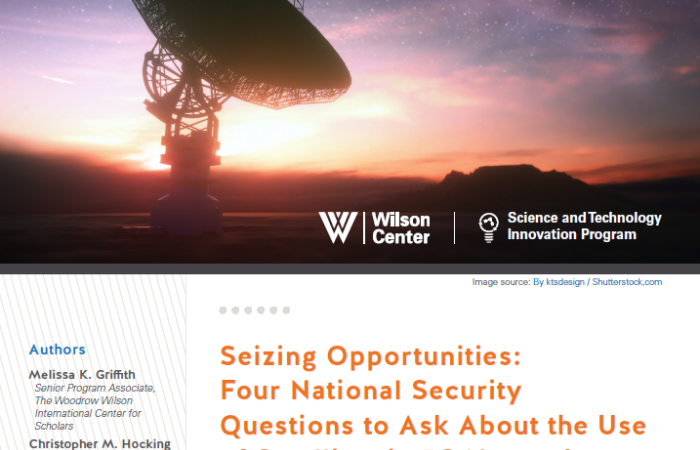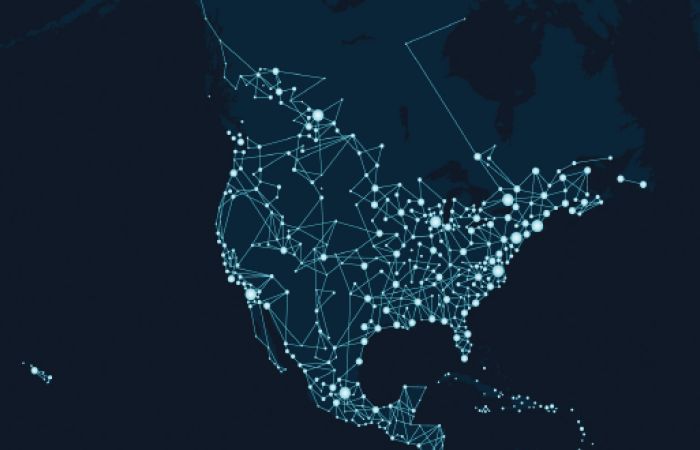5G Beyond Borders
A geostrategic approach to 5G technology transformation in North America.
Publications
Our insights and analysis explore how the U.S., Canada, and Mexico can work together to maximize the benefits of 5G and related technology through informed policy solutions.

Seizing Opportunities: Four National Security Questions to Ask About the Use of Satellites in 5G Networks
In order to deliver on the full promise of 5G networks, satellites will need to play a far more central role within telecommunications networks going forward with both terrestrial and space-based components working in tandem for a wider diversity of functions. What steps should we prioritize today to ensure greater security and resilience of 5G networks now and in the future?
Learn more
Workshop Summary | A North American Method to the 5G Madness: Conclusions from the 5G Beyond Borders Workshop
On October 15th, 2020, the Wilson Center, in partnership with The Centre for International Governance Innovation (CIGI) and the Tecnológico de Monterrey (ITESM), hosted a trilateral workshop to assess the state of play for 5G in North America as part of a larger project exploring how the US, Mexico, and Canada can work together—beyond geographic boundaries—to maximize the benefits of 5G and related technology through informed policy solutions. Throughout the workshop, three major policy action items were identified for effective North American cooperation to reduce risk, bolster economic gain, and ensure efficient 5G deployment across the continent.
Learn moreMultimedia
Everyone should know about 5G transition--and what it means to both North American and the world. To make core concepts more accessible, we've created a series of videos and dynamic interactives. Listen, play, and learn.

Virtualized RAN, Cloud RAN, and Open RAN: Making Sense of the 5G RAN Alphabet Soup
Why has the radio access network (RAN) found itself at the forefront of conversations around U.S. national security, innovation, and competitiveness? In this 5G STIP video we walk you through three related but distinct transformations occurring in the RAN: Virtualized RAN, Cloud RAN, and Open RAN.
Watch the video for more
